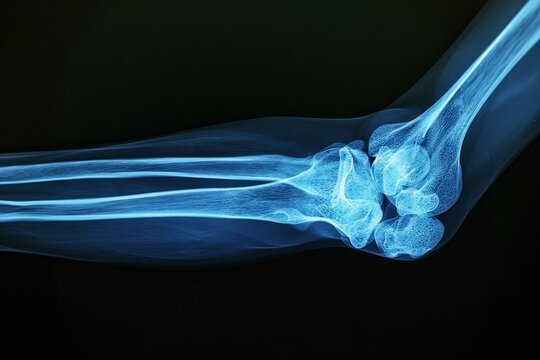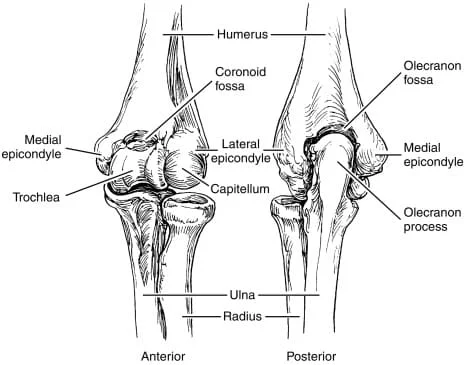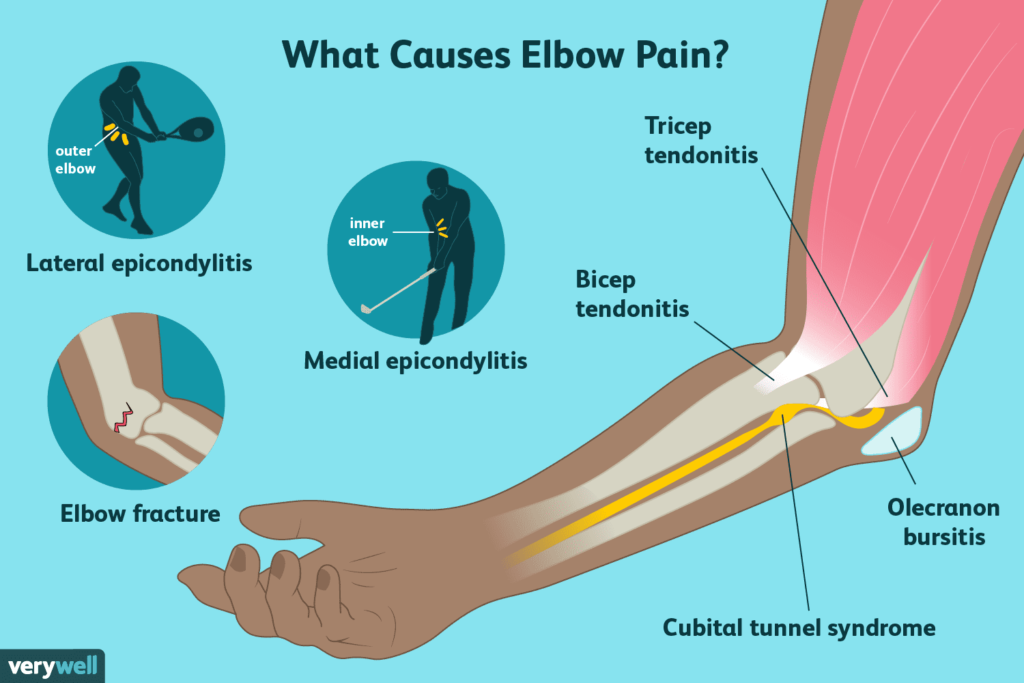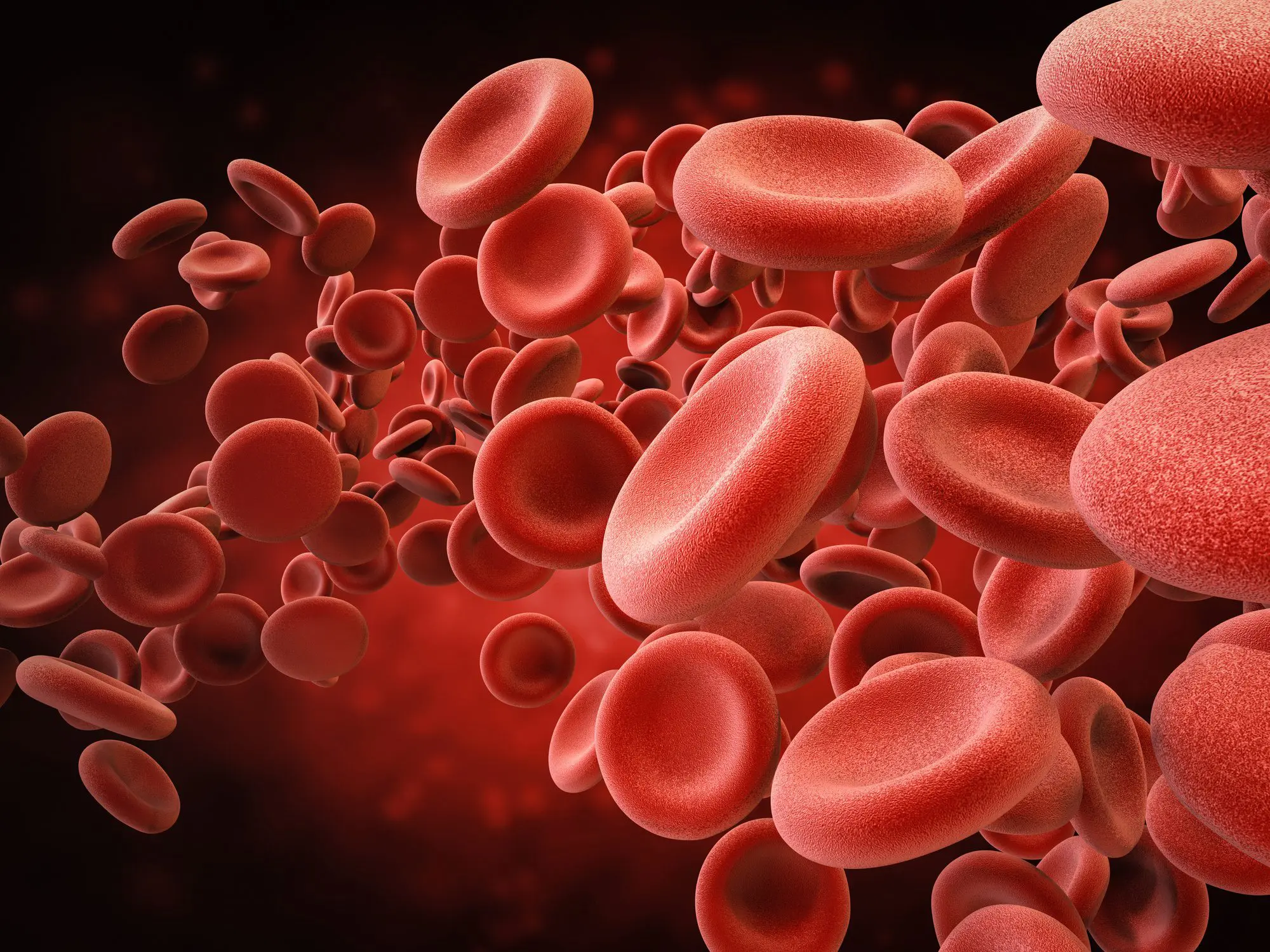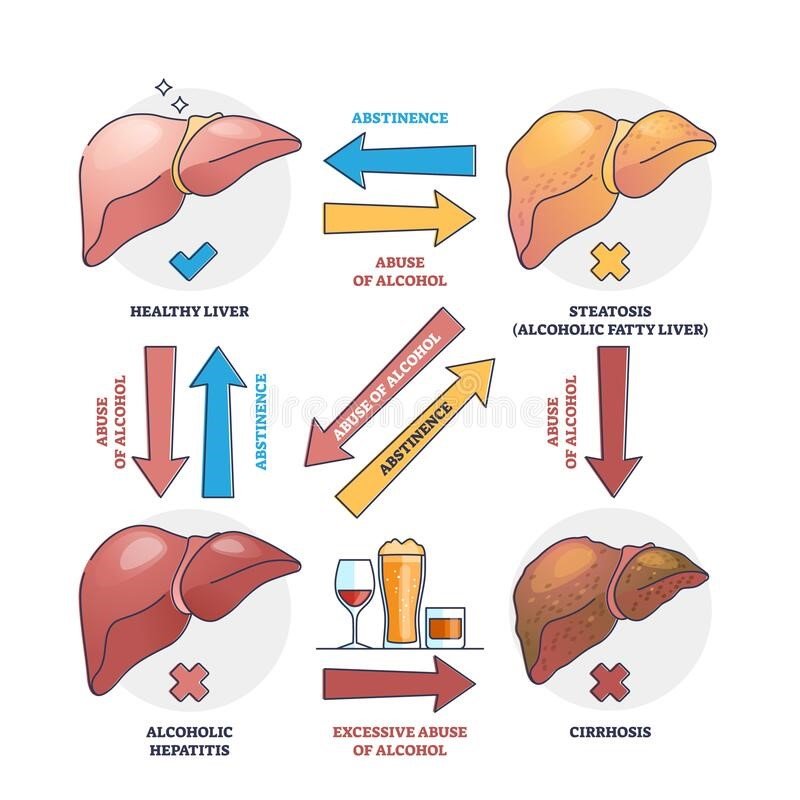The elbow is a hinge-type synovial joint that connects the upper arm to the forearm, allowing for flexion and extension movements.
- Structures of Elbow joint
- Blood Supply
- Innervation
- Movements
- Common Injuries
Structures of Elbow Joint
Articulating Surface
The elbow joint is composed of two distinct articulations:
- The trochlear notch of the ulna articulates with the trochlea of the humerus.
- The head of the radius articulates with the capitulum of the humerus.
Reference: Elbow Joint
Joint Capsule and Bursae
The elbow joint, a synovial joint, is encased in a strong and fibrous joint capsule that provides stability. The capsule is thickened medially and laterally to form collateral ligaments, which reinforce the joint and facilitate smooth flexion and extension movements. The joint also contains multiple bursae, fluid-filled sacs that reduce friction between tendons, bones, and skin during movement. The clinically significant bursae in the elbow region include:
- Subcutaneous olecranon bursa: positioned between the olecranon and the overlying skin and connective tissue, and frequently implicated in cases of olecranon bursitis.
- Intratendinous olecranon bursa: embedded within the triceps brachii tendon
- Subtendinous olecranon bursa: situated between the olecranon and the triceps brachii tendon, facilitating smooth movement during arm extension and flexion by reducing friction between the two structures
Ligaments
The elbow joint capsule is reinforced by ligaments on both the medial and lateral sides. Specifically:
- On the lateral side, the radial collateral ligament originates from the lateral epicondyle of the humerus and merges with the annular ligament of the radius, which is a ligament from the proximal radioulnar joint.
- On the medial side, the ulnar collateral ligament arises from the medial epicondyle of the humerus and inserts into the coronoid process and olecranon of the ulna.
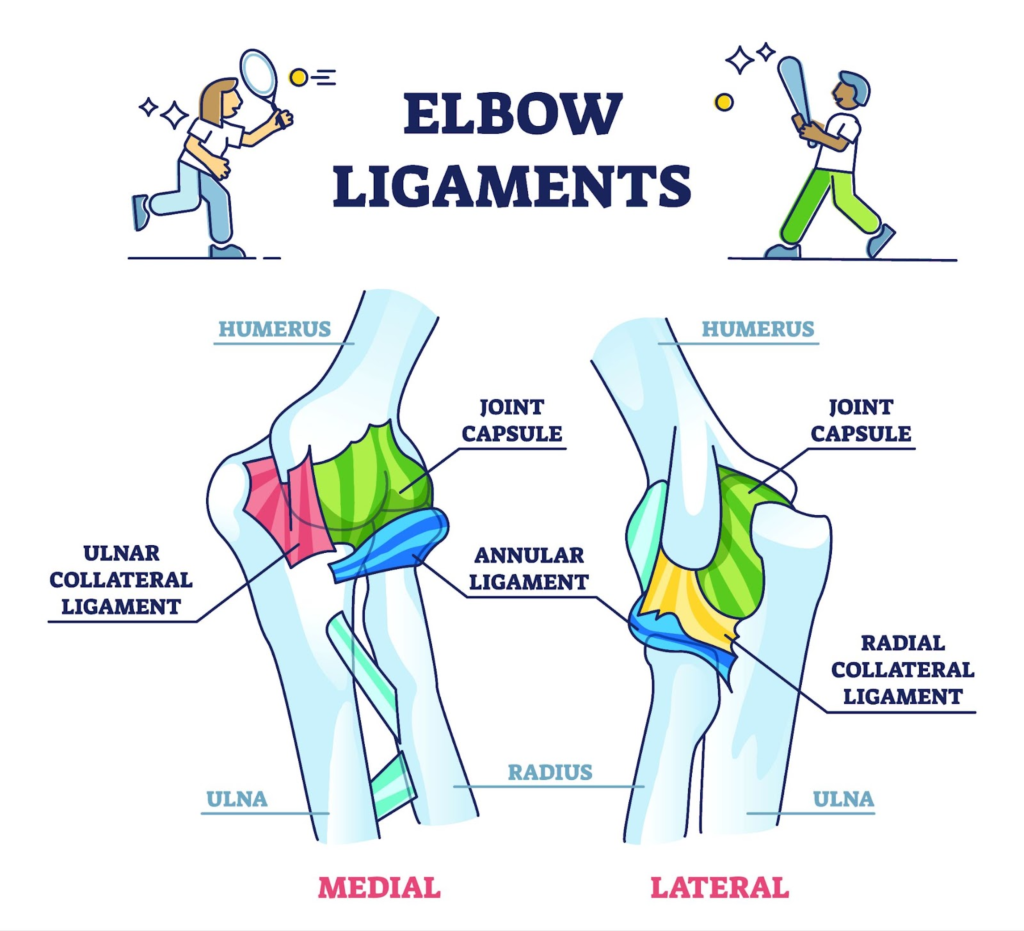
Reference: Ligaments
Blood Supply
The elbow joint is vascularized by a dense network of arteries, which arises from branches of the brachial artery, providing a rich and abundant blood supply to the region.
Innervation
The elbow joint receives innervation from a combination of nerve branches, specifically:
- The medial nerve
- The musculocutaneous nerve
- The radial nerve
- The ulnar nerve
These nerves provide sensory and motor innervation to the joint, controlling its movement and sensation.
Movements
The unique orientation of the bones in the joint forms a hinge-type synovial joint, permitting movement in one plane:
– Extension (straightening) of the forearm is facilitated by the contraction of two muscles:
- Triceps brachii
- Anconeus
– Flexion (bending) of the forearm occurs when the following three muscles contract:
- Brachialis
- Biceps brachii
- Brachioradialis
This hinge-type joint allows for a wide range of motion, enabling the forearm to move from a fully extended to a fully flexed position.
Injuries to the Elbow Joint
Bursitis
- Inflammation of the fluid-filled sac (bursa) that cushions joints and reduces friction
- Causes: repeated pressure, friction, or direct blows
- Symptoms: pain, swelling, warmth, and limited mobility
Dislocation
- Typically posterior or anterior
- Causes: trauma, falls, or sports injuries
- Symptoms: severe pain, deformity, swelling, and limited mobility
Epicondylitis
-Lateral Epicondylitis (Tennis Elbow):
- Pain located on the outer aspect of the elbow
- Affects the tendons of lateral epicondyle
-Medial Epicondylitis (Golfer’s Elbow):
- Pain located on the inner aspect of the elbow
- Affects the tendons attaching to the medial epicondyle of the humerus
Supracondylar Fracture
Break in humerus bone just above elbow joint
- Causes: falls onto an outstretched hand or direct blows
- Symptoms: pain, swelling, deformity, and limited mobility
- Complications: nerve or blood vessel damage, compartment syndrome
Reference: Causes
The elbow joint is a vital and complex part of our anatomy, playing a crucial role in our daily lives. By understanding its structure, function, and common issues, we can take proactive steps to maintain its health, prevent injuries, and ensure optimal mobility and strength. Prioritize your elbow joint health today for a lifetime of flexibility and function.

